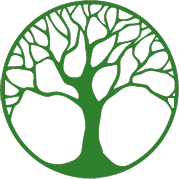The Philosophy of Games, they can be a Real Knockout, by Dave Barrows
- Log in to post comments
Many people like to play games. They can be a lot of fun. In this Blog we explore the philosophy of games and a new game developed in the United States and adopted in Canada.
Philosophy of games, by C. Thi Nguyen
August 2017, Philosophy Compass
What is a game? What are we doing when we play a game? What is the value of playing games? Several different philosophical subdisciplines have attempted to answer these questions using very distinctive frameworks. Some have approached games as something like a text, deploying theoretical frameworks from the study of narrative, fiction, and rhetoric to interrogate games for their representational content. Others have approached games as artworks and asked questions about the authorship of games, about the ontology of the work and its performance. Yet others, from the philosophy of sport, have focused on normative issues of fairness, rule application, and competition. Early academic attempts to cope with games tried to treat games as a subtype of narrative and to interpret games exactly as one might interpret a static, linear narrative. A faction of game studies, self-described as “ludologists,” argued that games were a substantially novel form and could not be treated with traditional tools for narrative analysis. In traditional narrative, an audience is told and interprets the story, where in a game, the player enacts and creates the story. Games might be seen as a novel type of fiction, which uses interactive techniques to achieve immersion in a fictional world. Alternately, games might be seen as a new way to represent causal systems, and so a new way to criticize social and political entities. Work from contemporary analytic philosophy of art has, on the other hand, asked questions whether games could be artworks and, if so, what kind. Much of this debate has concerned the precise nature of the artwork, and the relationship between the artist and the audience. Other streams of work have focused less on the game as a text or work, and more on game play as a kind of activity. One common view is that game play occurs in a “magic circle.” Inside the magic circle, players take on new roles, follow different rules, and actions have different meanings. Actions inside the magic circle do not have their usual consequences for the rest of life. Philosophers of sport have approached games with an entirely different framework. This has led into investigations about the normative nature of games—what guides the applications of rules and how those rules might be applied, interpreted, or even changed. Furthermore, they have investigated games as social practices and as forms of life.
"Knockout game"
"Knockout game" is one of the names given in the United States for assaults in which a person (with others acting as accomplices or lookouts) attempts to make an unsuspecting victim lose consciousness with a single sucker punch. Other names given to assaults of this type include "knockout", "knockout king", "point 'em out, knock 'em out", and "polar-bearing" or "polar-bear hunting" (called such when the victim is white, and the assailants are black). (Wiki)
WARMINGTON: Former CBC producer dies after random assault in Toronto.
No arrests have been made.
Published Feb 01, 2023
These random knock-out style attacks on people merely walking down the street are scaring people as much as the gunplay that is now plaguing Toronto.
Toronto Police were already searching for the thug who pushed a man to the ground on Danforth Ave. on Jan. 24, putting him in hospital with a crushed lung and head wounds. Now that the victim has died, will the original assault investigation be upgraded to a homicide?
That’s what happened with the guy who allegedly pushed an 89-year-old woman to her death late last month on Yonge St. We still don’t know who that poor soul was. She must have been so scared.
We do know the identity of the victim of the Jan. 24 attack: respected longtime CBC radio producer Michael Finlay. He was merely on Danforth Ave., near Jones Ave., when he was pushed face first to the ground.
